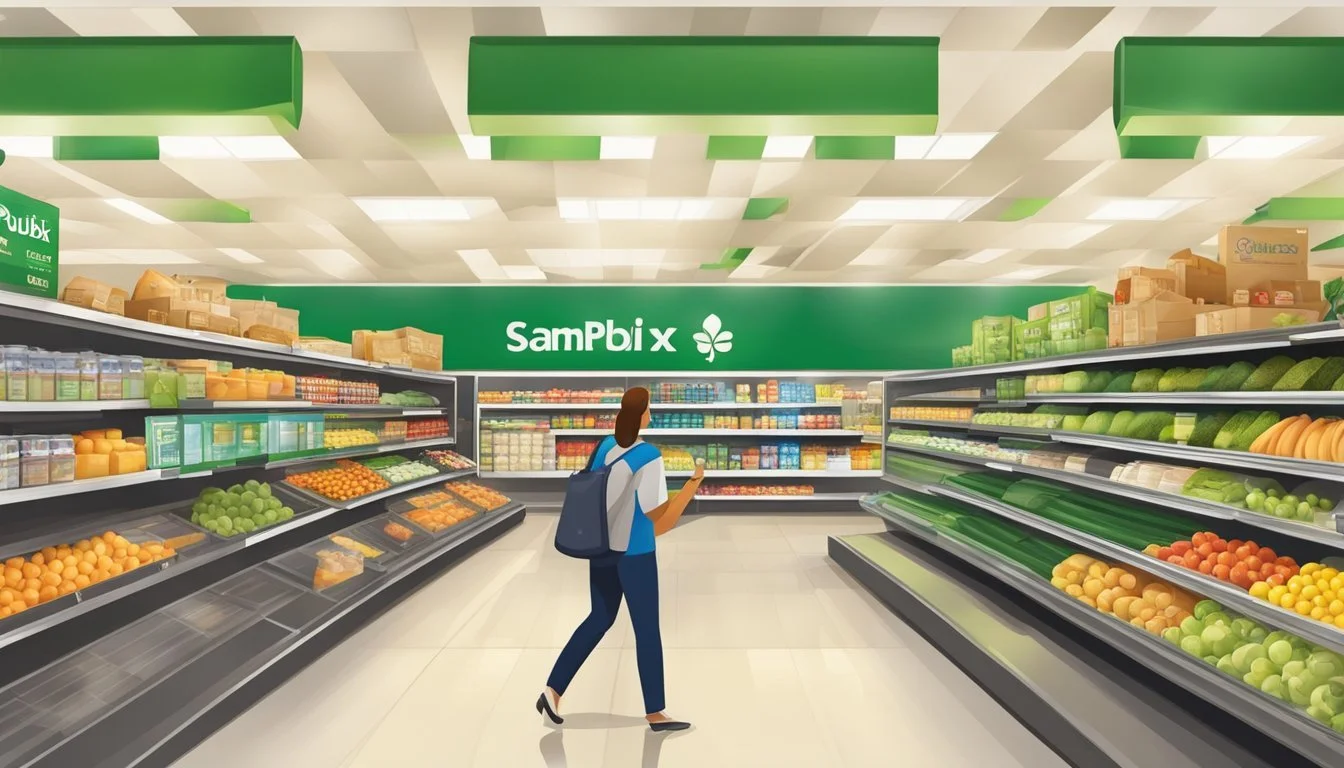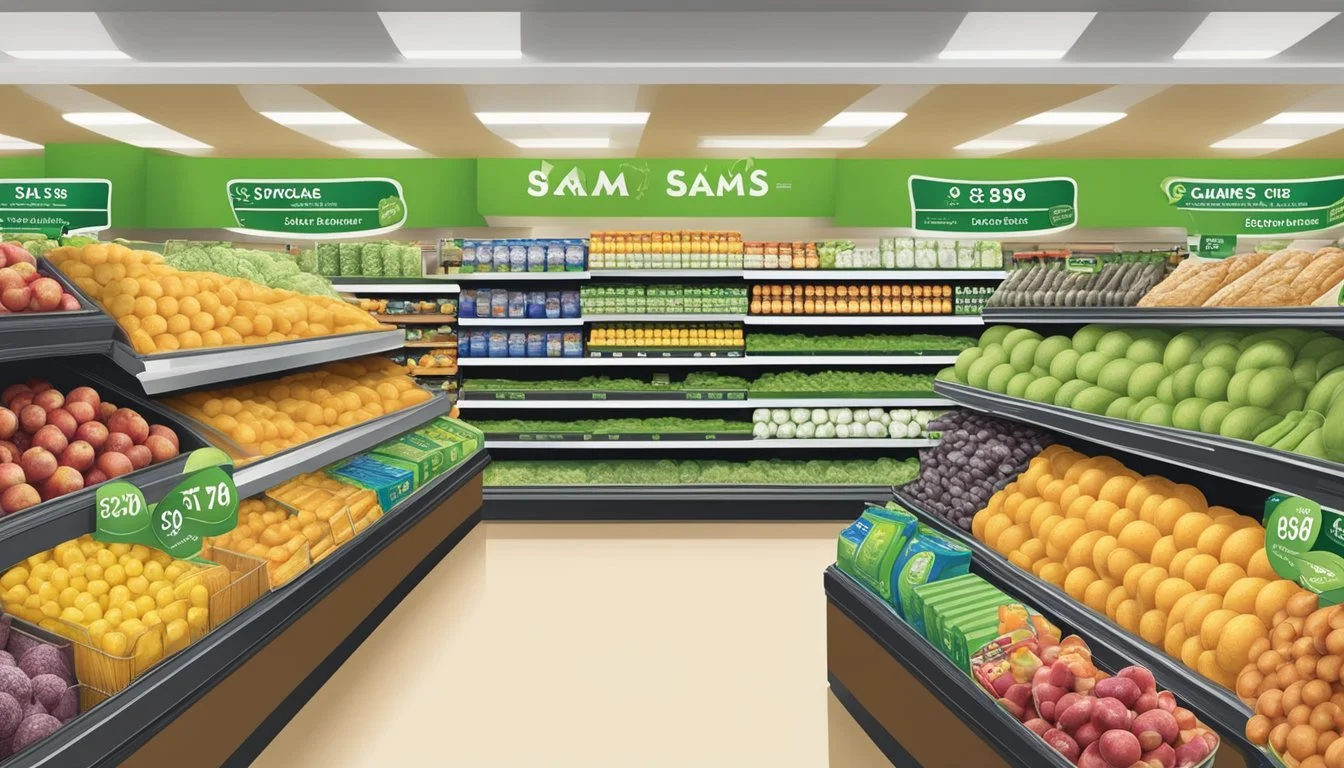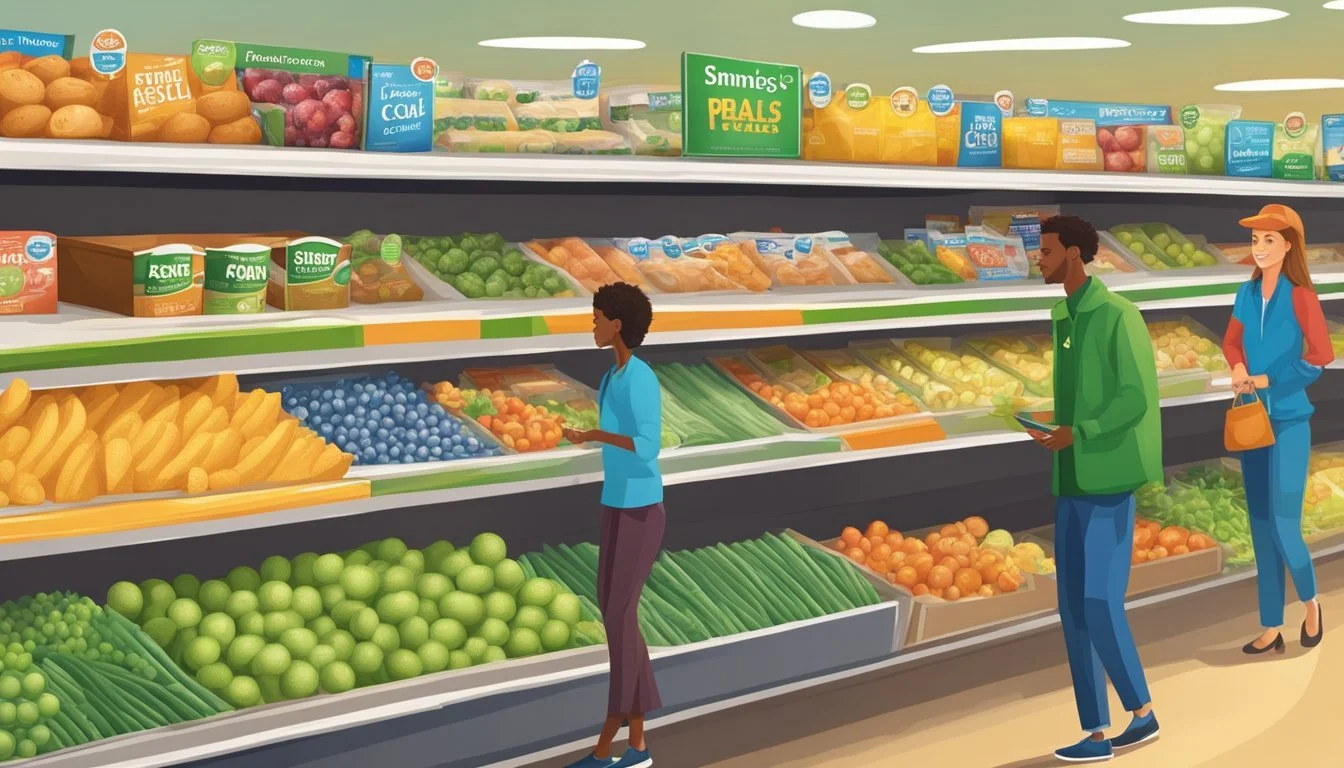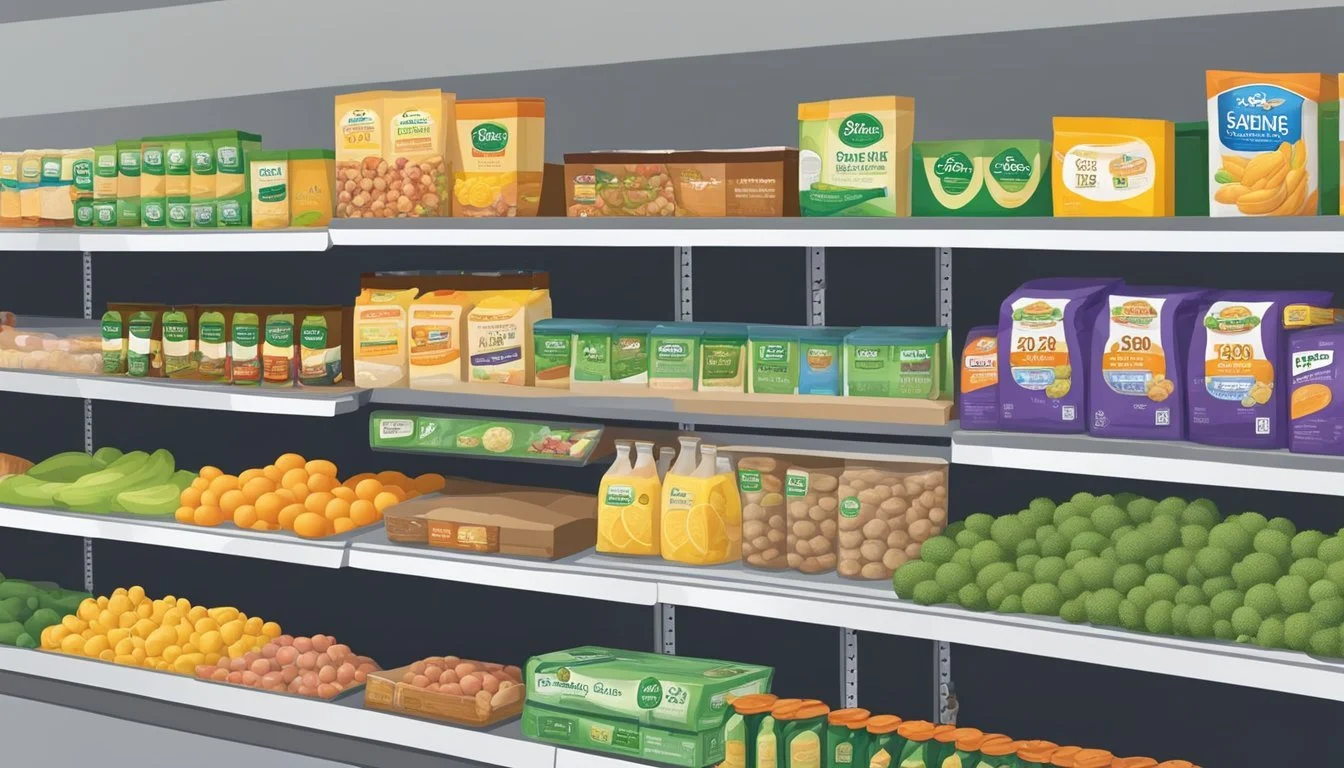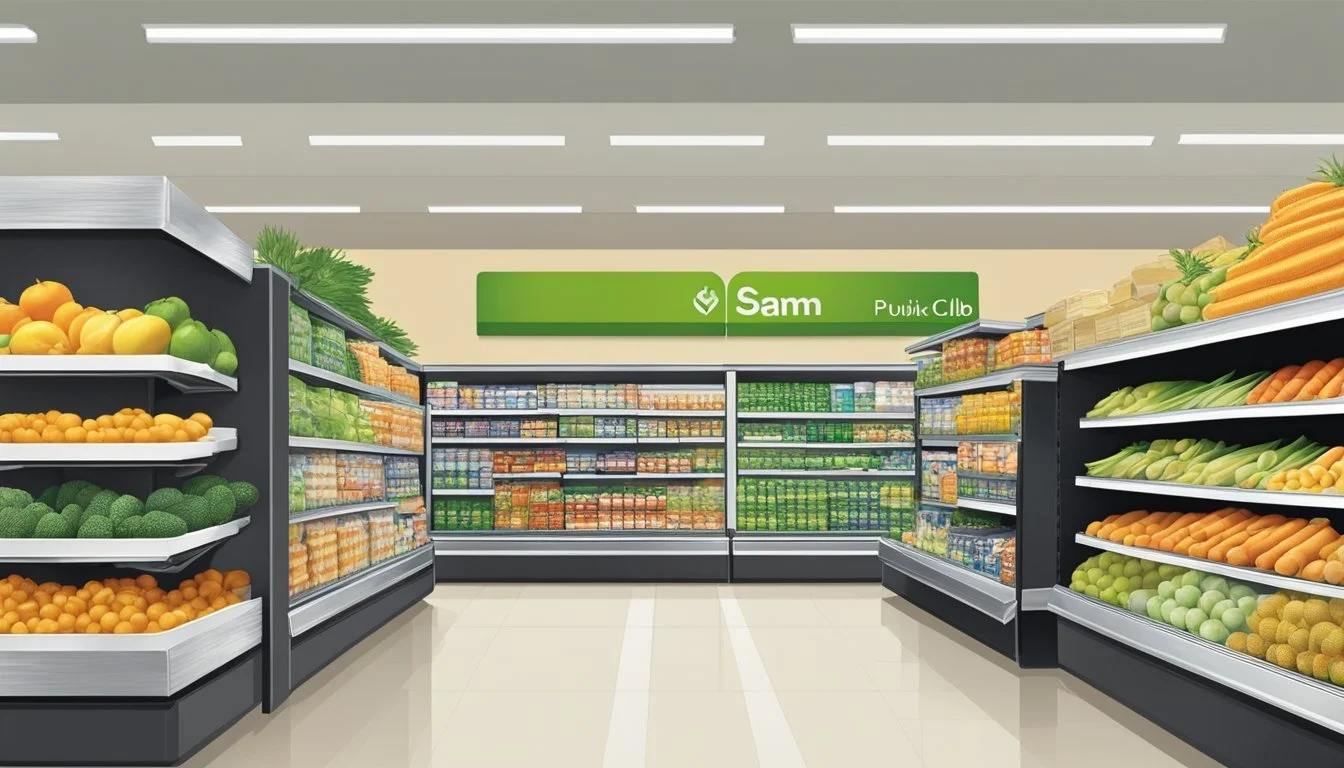Is Publix Cheaper Than Sam's Club?
Comparing Grocery Prices
Part of Our Grocery Store Guide with Details on Publix Prices and Sam's Club Prices
When it comes to grocery shopping, consumers are often on the lookout for the best value for their money. As two prominent players in the American retail landscape, Sam's Club and Publix each offer distinct shopping experiences and pricing models. Sam's Club operates on a membership-based structure and is known for offering products in bulk, which can lead to significant savings for shoppers who are looking to stock up on items. On the other hand, Publix is recognized for its customer service and community presence, providing a traditional grocery store environment without the requirement of a membership.
Price comparisons between the two stores can be complex due to their differing business models. Bulk purchasing at Sam's Club often translates to lower prices per unit when compared to the individually priced items at Publix. However, shoppers should consider factors such as the cost of Sam's Club membership, the quantity of goods they can realistically consume, and the convenience that Publix offers with its numerous locations and no membership requirement. Ultimately, the better value may depend on individual shopping habits, budget constraints, and the importance of the shopping experience.
Understanding the Retail Landscape
In analyzing the competitive pricing between Publix and Sam's Club, it's crucial to examine the broader context of the retail landscape, which includes various retailers and their respective business models.
Types of Retailers
Retailers in the United States encompass a diverse array of store types, each catering to specific consumer needs and preferences. Supermarkets like Publix, which has a strong presence in the Southeastern U.S. particularly in Florida, specialize in grocery items and household essentials. National chains such as Kroger and Whole Foods focus on food retail, with Kroger serving a wide customer base and Whole Foods targeting the organic and natural foods market. Discount grocery stores like Aldi and Trader Joe's offer lower prices by curating a limited selection of private-label items. On the other end, major retailers like Walmart, based in Bentonville, Arkansas, and Target, are known for their wide variety of merchandise beyond groceries.
Retailers can be further categorized into brick-and-mortar stores and online platforms, with giants like Amazon leading the digital marketplace, offering a vast range of products alongside grocery through its ownership of Whole Foods.
Discount and Warehouse Store Overview
Warehouse stores, such as Sam's Club and Costco, operate on a membership model, offering bulk items at discounted prices. Sam's Club, a division of Walmart, provides a variety of merchandise from groceries to electronics, often in larger quantities. Costco, similar in its approach, also sells products in bulk, typically catering to customers looking to purchase larger amounts at lower per-unit prices. These warehouse stores differ from traditional supermarkets like Publix, headquartered in Lakeland, Florida, which focuses on a traditional grocery shopping experience with a strong emphasis on customer service and a wide array of product offerings including deli and bakery sections.
Understanding these distinctions is key when comparing prices and determining which retailer offers the best value. Each company's approach to retailing—from the scale of operation to inventory management—influences their pricing strategies and ultimately the cost savings passed on to consumers.
Comparing Club Memberships
When choosing between Publix and Sam's Club, consumers consider the range of benefits each membership offers and the associated fees to determine their potential savings and value for money.
Membership Benefits
Sam's Club memberships are tiered with the most notable being the Plus membership. This premier tier allows members to earn 2% cash back on qualifying purchases. Plus members also receive additional savings on pharmacy and optical services, including Select generic prescriptions for $0 and a 30-day supply of certain generic drugs for $10 or less.
On the other hand, Publix does not operate a club membership structure in the traditional sense and instead offers various weekly specials, digital coupons, and a rewards program that are available to all of their shoppers without any membership fee.
Membership Fees
The membership fees play a crucial role when Comparing Sam's Club and Publix.
Sam's Club:
Standard Membership: $45 per year
Plus Membership: $100 per year
Publix:
No membership fee is required for accessing deals and savings.
Members should consider their shopping frequency and the potential savings from membership benefits to assess which fee structure offers the better value for their specific needs.
Price Analysis
This section provides a detailed examination of the pricing dynamics between Publix and Sam's Club, enabling consumers to make informed purchasing decisions based on their budget.
Overall Price Comparison
When comparing the prices of similar products at Publix and Sam's Club, one must consider the type of store and purchasing models. Sam’s Club, a membership-based wholesale retailer, offers bulk items generally at a lower price point per unit compared to Publix, which operates as a traditional supermarket. For individual items, consumers may find that Publix's prices can be higher than those at Sam's Club. According to a Knoji rating, Sam's Club has an overall score of 4.4 based on certain metrics, while Publix scores slightly lower at 4.3 out of a possible 5. This suggests that Sam’s Club may provide more cost-effective options overall.
Bulk Purchase Considerations
Shoppers looking to save money on bulk purchases will typically find Sam’s Club to be more budget-friendly. Large quantities at Sam's Club come with lower prices, which can translate to significant savings, especially for families and business owners. However, this advantage comes with the need for adequate storage space and the upfront cost of a membership fee. One must weigh these factors against Publix’s lack of membership fees and the convenience of buying smaller quantities. Although Sam's Club is part of Walmart and can leverage its supply chain to offer lower prices, Publix has competitive offers on certain items, particularly during sales or with the use of coupons.
Product Selection and Quality
When comparing Publix and Sam's Club, it's essential to look at the range of available products and their quality. Each store offers a unique selection with varying focuses on store brands, grocery items, and national brands.
Store Brands vs. National Brands
Publix operates with a strong presence of its own store brands like Publix and GreenWise, which offer a variety of grocery items including produce, meat, and dairy. These store brands are designed to provide a balance between affordability and quality, directly competing with national brands. Sam's Club, on the other hand, emphasizes its Kirkland Signature brand, synonymous with bulk quantities and competitive pricing. The Kirkland brand covers an extensive range of items, often considered equivalent or superior in quality to national brands.
Publix
Focus on affordable quality
Wide range of products under own brands
Sam's Club
Bulk packaging for savings
Kirkland Signature brand with high customer loyalty
Quality of Goods
In terms of quality, Sam's Club and Publix both have reputations for offering high-quality goods across their departments. Publix's produce section is often praised for its freshness and variety, while Sam's Club is recognized for providing larger-sized products, which may be advantageous for families or businesses. For meat and dairy, both stores have rigorous quality control procedures to ensure customer satisfaction.
Produce
Publix: Renowned for fresh and diverse produce selection.
Sam's Club: Offers larger packs, suited for bulk purchase.
Meat and Dairy
Both stores offer a selection of organic and traditional options.
High-quality standards maintained for customer confidence.
By offering their own high-quality store brands, both Publix and Sam's Club strive to provide value-for-money without compromising on the quality of grocery items, ensuring that the customers can make a choice that suits their preferences and budget.
Shopping Experience
When comparing the shopping experience between Publix and Sam's Club, a shopper will notice distinct differences in store layout, design, and customer service. These differences may influence their preferences and choices depending on their shopping list and the importance of services offered.
Store Layout and Design
Publix stores often feature a welcoming, clean, and well-organized layout that facilitates a straightforward grocery shopping experience. Shoppers can navigate through clearly marked aisles and sections to quickly find items on their shopping list. The store size is typically moderate, making it an accessible option for a quick shopping trip. Sam's Club, on the other hand, is characterized by its vast warehouse style, which can be overwhelming due to its size but offers a wide variety of bulk goods, ideal for extensive grocery lists or large families.
Customer Service
At Publix, customer service is a firmly embedded aspect of its brand identity. The company places a strong emphasis on friendly staff interactions and assistance throughout the store. Services like curbside pickup and home delivery add convenience for customers looking to save time. Sam's Club provides a different type of value through its membership model, offering exclusive services and checkout options for members who prioritize buying in bulk and ensuring a relatively swift exit from the store due to the streamlined self-service and traditional checkout options designed to handle large cartloads.
Deals and Promotions
In the competitive landscape of grocery retail, Sam's Club and Publix each offer a unique set of deals and promotions aimed at providing value to their customers. These incentives include coupons, weekly sales, and store exclusive offers that vary in their availability and structure.
Coupons and Sales
Sam's Club, being a bulk retail warehouse, typically does not offer traditional coupons. However, they do provide instant savings applied directly at checkout on various items. These discounts are often available to all members and can result in substantial price reductions. Additionally, Sam's Club may offer special promotional events with larger discounts that are time-sensitive, allowing customers to plan and save.
Publix, on the other hand, provides a wide array of coupons, which can be found in-store, through their weekly circular, or on their official website. They offer both manufacturer and store-specific coupons, which can be combined with their Buy One Get One Free (BOGO) sales for increased savings. Publix places a strong emphasis on weekly sales, rotating deals across different departments.
Store Exclusive Offers
Sam's Club members have access to exclusive offers not only on grocery items but across a variety of product categories. These include electronics, jewelry, and tires, with periodic special deals known as "Shocking Values" providing significant discounts. Additionally, Sam's Club provides a cash back rewards program for its Plus members, allowing for up to 2% cash back on qualifying purchases.
In contrast, Publix doesn't have a store membership program, but they offer a range of exclusive deals to all their customers. One of their signature promotions is the aforementioned BOGO deals which often spotlight grocery items and household staples. Publix's promotions tend to focus more on immediate savings at the point of purchase, as opposed to a cash back or rewards structure.
Product Categories
In comparing the prices of Publix and Sam's Club, it's crucial to examine the cost differences across various product categories. Each category can significantly impact a shopper's budget depending on their specific needs and shopping habits.
Fresh Produce and Perishables
At Publix, shoppers often find a wide array of fresh produce, including bananas and organic options. Prices for perishables like milk, eggs, and fresh chicken breast tend to be competitive, with an emphasis on quality. Sam's Club, on the other hand, sells perishables in bulk, which can offer savings for larger households. The cost per unit for items like eggs and milk may be lower, but requires purchasing larger quantities.
Non-perishable Goods and Groceries
When it comes to non-perishable goods and groceries such as cereal, pasta, and canned goods, Sam's Club often prices these items lower as they are sold in larger packages. Bulk purchasing can lead to major savings. Publix offers a more diverse selection of brands and sizes for goods like peanut butter and bread, which may cater to customers not interested in bulk buying. The store often features weekly specials and buy-one-get-one-free deals on various groceries.
Electronics and Non-food Items
For electronics, health and beauty, and office supplies, Sam's Club typically provides more competitive prices due to its business model that emphasizes bulk sales and low margins. Customers can find good deals on items like laundry detergent and dryer sheets when bought in larger quantities. Publix, while not primarily known for electronics, does stock essential health and beauty items and smaller packages of laundry and cleaning supplies at standard retail prices.
Bulk Buying and Storing
When individuals shop at wholesale clubs like Sam's Club, they often encounter the opportunity to purchase products in bulk, finding better deals on larger quantities compared to regular store sizes. Efficient storage strategies are vital to making the most out of bulk purchases, such as those of staples and packaged foods.
Advantages of Bulk Shopping
Bulk shopping presents cost-effective solutions for consumers, especially when purchasing staple items that have long shelf lives. Sam's Club typically offers competitive pricing on items such as toilet paper and diapers, due to larger pack sizes and the economic principle of scale.
Toilet Paper: Customers can expect to find more sheets per roll, or more rolls per package, translating to lower costs per use.
Diapers: Parents may benefit from bulk purchase discounts, reducing the cost per diaper substantially.
For packaged foods, bulk buying can lead to significant savings. However, consumers should always compare unit prices as some items may be cheaper at supermarkets like Publix when promotions or coupons are applied.
Storage Strategies for Bulk Purchases
The key to capitalizing on bulk purchases lies in effective storage methods that preserve product quality and prevent waste. Consumers should consider the available storage space and the perishability of items before buying in bulk to avoid spoilage.
Dry Staples: Keep products like rice and pasta in airtight containers to protect from pests and moisture.
Freezable Items: Utilize freezer space for perishable goods; label and date packages to track usage.
Non-Perishables: Allocate shelving units or closets for items like toilet paper and cleaning supplies where they are easily accessible yet out of the way.
By following these strategies, customers can enjoy the financial benefits of bulk buying without the concern of storage-related issues.
Ancillary Services
When comparing ancillary services between Publix and Sam's Club, customers should consider the availability and scope of pharmacy and wellness services, as well as other in-store services that enhance the shopping experience.
Pharmacy and Wellness Services
Publix offers pharmacy services that are competitive within the industry. They provide a range of generic medications at $7.50 for a 90-day supply, which is notably economical. Their pharmacies also feature wellness services, such as vaccinations and health screenings.
Sam's Club, as part of its membership model, provides its own pharmacy services to members, often with discounted pricing. They offer a similar range of pharmacy services, which could be greatly cost-effective for families and individuals requiring long-term prescriptions.
Other In-Store Services
In addition to pharmacy and wellness services, both Publix and Sam's Club offer a variety of other in-store services. Publix has a well-known deli where customers can purchase made-to-order meals and a range of specialty foods.
Sam's Club differentiates itself with a bulk item focused model and may provide services aligned with this, like special order options and larger quantities for purchase. While specific policies and available services can vary by location, they generally include photo printing and optical services as part of their membership benefits.
Location and Accessibility
When comparing Publix and Sam's Club, it's important to consider their respective geographical presence along with how accessible and convenient their locations are for consumers.
Geographical Presence
Publix operates primarily in the Southeastern United States, with its headquarters located in Lakeland, Florida. The grocery chain's stores are predominantly found in states such as Florida, Georgia, Alabama, and the Carolinas.
Sam's Club, a division of Walmart Inc., has a wider national reach with its headquarters in Bentonville, Arkansas. It serves a much larger area, including numerous locations across the United States.
Accessibility and Convenience
Publix stores are often lauded for their convenience, strategically situated in urban, suburban, and some rural areas to cater to a diverse customer base. They offer a user-friendly shopping experience with well-designed store layouts.
On the other hand, Sam's Club locations are typically larger warehouse-style stores that require more space. As a result, they may not be as ubiquitous as Publix, especially in densely populated regions. Moreover, the shopping experience may vary as Sam's Club caters predominantly to bulk purchasing, which might not appeal to or be as accessible for small-scale buyers.
Financial Perspectives
In analyzing the financial aspects of Publix and Sam's Club, it is essential to consider the revenue each company generates and their respective shares of the retail market. These factors provide insight into their pricing strategies and market positioning.
Company Revenue
Publix reports robust financial figures, reflecting its standing in the grocery sector. In particular, capital expenditures by Publix are noteworthy. The company projected spending $2 billion in 2022 and actually invested closer to $1.8 billion. This level of investment is often indicative of a strong revenue base, allowing for expansion and store remodels. Publix operates on a private ownership model, which can affect its pricing and result in fluctuating revenues.
In contrast, Sam's Club, as a division of Walmart Inc., contributes to Walmart's overall revenue. Sam's Club's warehouse business model emphasizes bulk sales and membership fees, which can lower operational costs and potentially reduce customer prices. Volume selling is a pivotal factor in their financial success, with savings passed on to their members contributing to their ability to offer lower prices on many items.
Retail Market Share
Publix and Sam's Club operate in different segments of the retail market, affecting their shares and customer perception of price. Publix has a strong presence in the southeast region of the United States and is recognized for its customer service and high-quality products. Its market share is solid in the conventional supermarket segment, though it doesn't directly compete with wholesale clubs.
Sam's Club operates within the warehouse club segment of the market. Their bulk sales model often attracts a distinct customer base interested in purchasing items in larger quantities. This model allows them to capture a significant portion of the wholesale club market share.
Both companies aim for competitive pricing within their respective domains, but their financial strategies vary widely. Publix focuses on customer experience and quality products, potentially impacting their pricing structure. Sam's Club, underpinned by large-scale operations and warehouse efficiency, often offers lower prices but requires customers to buy in bulk and pay for membership.
Customer Insights
When customers consider where to shop, factors like pricing, product availability, and shopping experience shape their decisions. Understanding these can provide insights into why customers may prefer Publix or Sam's Club.
Customer Loyalty and Preferences
Customers loyal to Publix often cite the store's reputation for high-quality groceries and excellent customer service. The company has gained popularity in certain regions and is known for its clean stores and a pleasant shopping atmosphere. This dedication to quality and service can influence customer preferences, often outweighing the potential for saving money at wholesale clubs.
In contrast, Sam's Club members are generally motivated by the prospect of saving on bulk purchases. While individual items may not always be cheaper, the club’s discounts on large quantities attract those who prioritize budget over brand variety or store ambiance.
Shopper Behavior Analysis
Analysis of shopper behavior reveals distinct patterns. For example:
Publix Shoppers:
Often focus on quality of food and the shopping environment.
Shop more frequently for fewer items.
Sam's Club Shoppers:
Are driven by the economics of bulk buying, equating larger sizes with better value.
May shop less frequently but purchase larger quantities of groceries to maximize savings.
Both stores have their own strategies to retain customers, with Publix emphasizing a personalized shopping experience and Sam's Club offering financial benefits through bulk purchases. While some shoppers use a combination of stores to balance their priorities for food quality and cost-saving, others remain loyal to one, primarily influenced by their shopping habits and preferences.
Legal and Ethical Considerations
In comparing whether Publix is cheaper than Sam’s Club, it is essential to consider the legal and ethical frameworks guiding both corporations, as they play a crucial role in their pricing strategies and affect consumer perceptions.
Corporate Policies and Ethics
Publix operates with a commitment to customer satisfaction, community involvement, and employee welfare. Its pricing policies reflect a balance between profitability and ethical treatment of stakeholders. They adhere to fair pricing laws and regulations to maintain a competitive but legal advantage within the market.
Sam's Club, as a division of Walmart, follows a bulk-sale model which allows for lower prices due to economies of scale. Their ethical code mandates integrity in every aspect of their business, which includes compliance with all laws that pertain to fairness and competition.
Sustainability and Social Responsibility
Both Publix and Sam's Club have policies in place that emphasize sustainability and ethical sourcing, which can influence pricing.
Publix emphasizes:
Sustainable sourcing of products
Energy-efficient operations
Community engagement through charitable initiatives
Sam's Club focuses on:
Environmental sustainability
Responsible business practices
Philanthropy and community support
Their respective policies not only ensure legal compliance but may also provide a competitive edge by appealing to ethically-minded consumers. The cost of implementing these practices may be reflected in their product pricing, affecting the price comparison.
Conclusion
When comparing the cost of groceries, shoppers are often concerned with finding where they can save money and receive the best value. Sam's Club typically offers groceries at lower prices due to its bulk sales model. Yet, lower price points at Sam's Club come with the requirement of buying in larger quantities, which may not suit every shopper's needs or storage capacities.
Publix, on the other hand, despite generally higher prices, provides a more traditional grocery shopping experience with more opportunities for individual item purchases. This can be beneficial for consumers with smaller shopping lists or those looking for specialty items. Moreover, Publix is well-regarded for its customer service and shopping experience.
Consumers should consider their individual needs when choosing between Sam's Club and Publix. Those looking to purchase large quantities and stock up will likely find Sam's Club to be more cost-effective. Meanwhile, shoppers prioritizing convenience, smaller quantities, or specific brands may find Publix to be more suitable, despite potentially higher prices on some items.
Comparison at a Glance:
Factor Sam's Club Publix Pricing Generally lower Generally higher Quantity Bulk purchases Individual items Shopping List Large, stock-up Smaller, specific Value Cost savings Quality and experience
Ultimately, selecting between Sam's Club and Publix depends on a user's shopping style and budget preferences. Careful consideration of shopping habits and list will help in determining the most economical choice for each individual.



